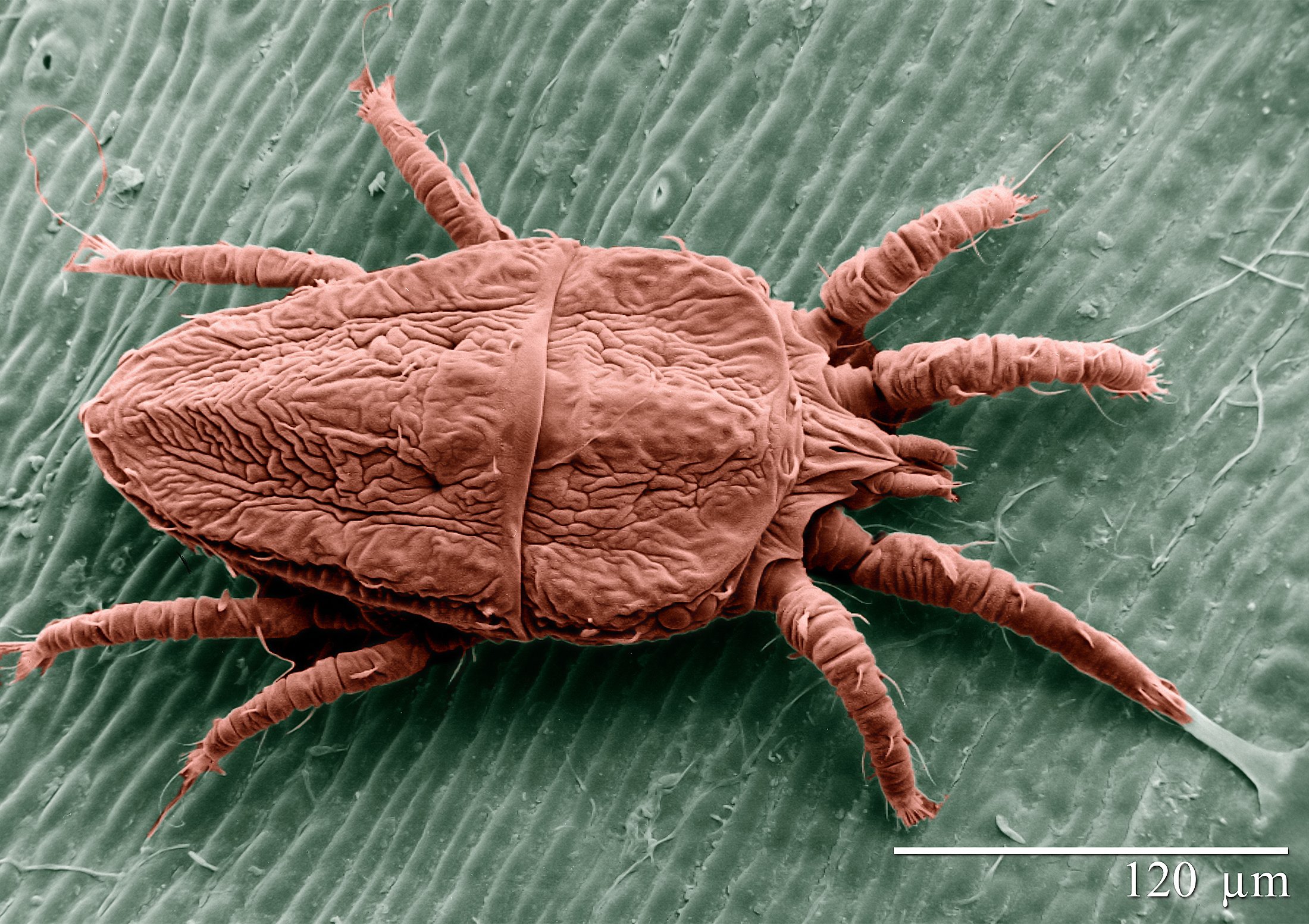(Brevipalpus phoenicis)
Credits: Biovision-Infonet

(c) Courtesy, Erbe, Pooley: USDA, ARS, EMU, 2008
The adults are about 0.1 mm. It usually feeds on the trunk below the level where the bottom whorl of leaves is attached. The mites move upward on the trunk and outward onto the leaves and fruit as the population increases, leaving a large, conspicuous, damaged area behind them.
The affected area becomes raised and blister-like. Later the affected tissue dries up, dies and becomes discoloured, forming a large and continuous callous area, light brown and scaly and/or scabby.
Damage by feeding on young papaya fruits is manifested by sunken areas. Sometimes feeding by the mite causes a copious outflow of a milky white liquid that mars the appearance of the fruits.
Under heavy mite infestations, the papaya stem, which normally remains green for a long time, becomes brownish and corky in appearance, and has a spindly growth (Martin Kessing and Mau, 1992; CABI Compendium, 2000).
What to do:
- Natural enemies, like predatory mites, often provide adequate control of the false spider mite.
- Wettable sulphur sprays can be used in case of heavy infestations (note that sulphur has phytotoxic effects when used during hot weather).